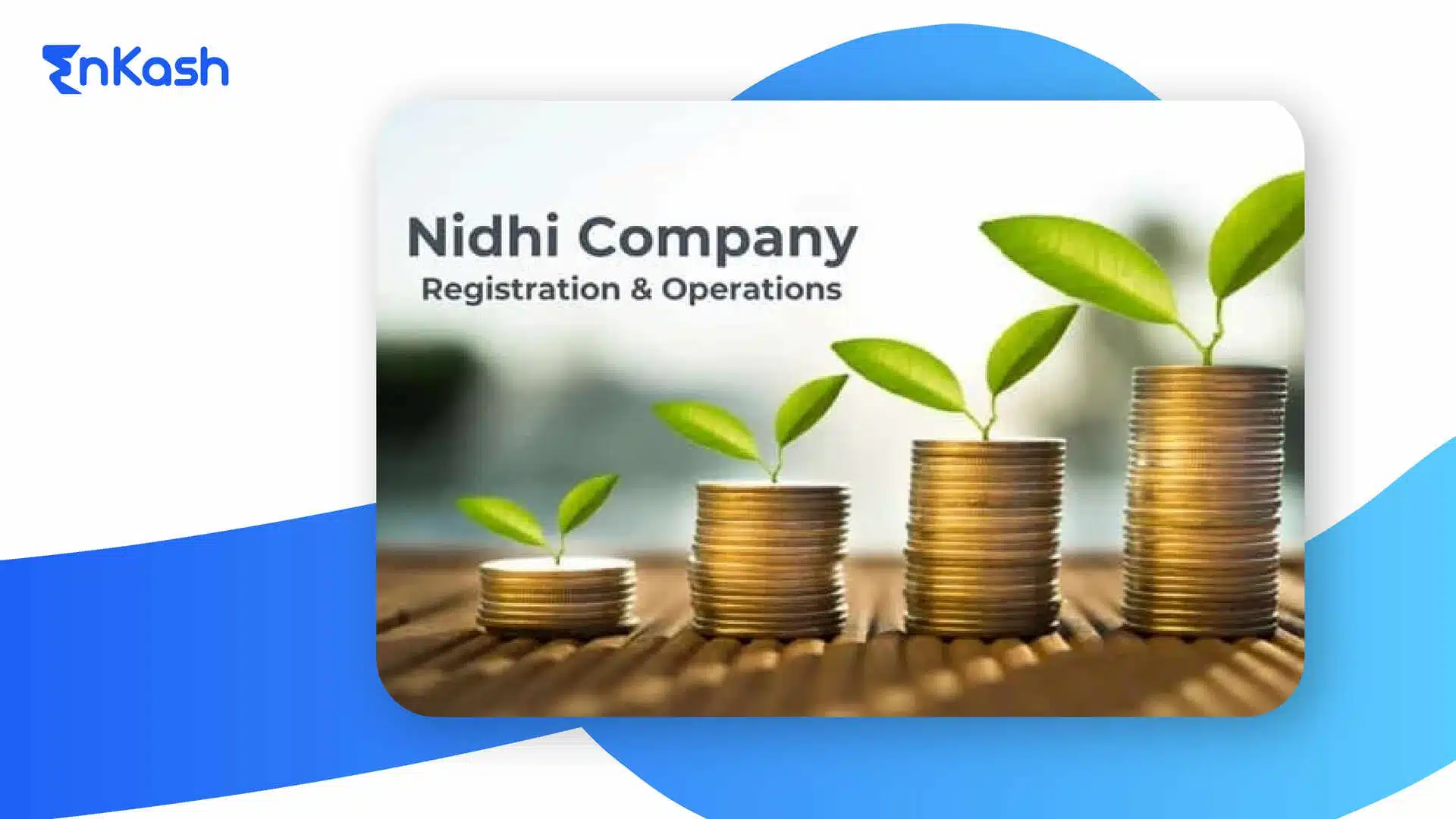Introduction
When businesses grow, they become more efficient and less costly to manage in principle. This is what is called an economies of scale, being a situation where the unit cost diminishes as production increases. Economies of scale occurs when the bigger the company is, fewer are the cost per unit it has to bear over each unit of production. Purchasing raw materials in bulk, using better technological processes, and perhaps even employing specialized workers are some of the advantages it enjoys. These benefits help to lower the overall cost of producing a product, allowing higher profit to be earned and strengthening the market edge of that company. Understanding economies of scale is very important in building a company like Enkash that aims for growth and sustenance. This blog will provide its meanings, types, real-life examples, and how companies could adapt and profit from it.
What exactly are economies of scale?
Economies of scale refer to the reduction of production costs experienced by a company while increasing production. As business expansion goes on, fixed costs (such as rent, staff salaries, and equipment) are spread over a large number of units. Spreading the costs of fixing causes the per-unit production costs to fall. Essentially, the more a company produces for sale, the less it spends on producing each item. The concept allows the business to increase its efficiency and profitability; hence, it is one of the concepts essential to their growth and competition. To fully benefit, businesses often automate routine financial processes such as budgeting and employee advances. This not only reduces overhead but also improves financial control and accuracy.
Learn how tools like EnKash’s Budget and Advances platform streamline these operations.
Why It Happens in Business Growth
Economies of scale arise because business growth brings with it certain advantages. Larger units buy raw materials in bulk and receive larger discounts than smaller units would ask for. Through these bulk purchases, they lower the cost per unit and earn money. Larger businesses also use capital funds to invest in machinery with a high level of operational capabilities, in contrast with the machinery used in smaller units. Such machinery includes technological applications or automated machine capable of speeding up the production process and reducing errors that humans would commit, thus lowering the labour cost. Larger firms also have the luxury of employing specialist workers to perform particular tasks more efficiently than generalists. The larger these companies are, the better they will coordinate their resources and workforces so their operations run more efficiently and at lower costs than smaller companies.
Different Kinds You Should Know About
There are two main types of economies of scale: internal and external.
Internal economies of scale
It evolve within the company with its growth and expansion. These originate from the company’s operations and decisions. One classic example would be that advanced machinery will shorten production time. Companies can invest in state-of-the-art technology that will enable them to produce more output at a lower cost per unit. Labor specialization and hiring skilled workers are other examples; these enhance the performance of production processes and thus improve productivity. Another example of internal economies would be managerial advantages. Internal economies arise when an increase in scale enables a firm to hire expert managers, who then improve decision-making and operational processes. Access to finance is another internal advantage; large firms are considered less risky by banks and financial institutions, allowing them to get loans at lower rates of interest. Internal economies of scale allow marketing to be less costly for a larger firm as the advertising costs are shared over a larger number of units produced, resulting in lower marketing costs per unit.
External economies of scale
It arise outside the business but may substantially benefit it due to the growth in either industry or sector. When big infrastructure, such as roads, ports, and communication networks, is developed around an area because the industry in that area has expanded, everything seems to be easier and cheaper to operate for businesses. Laborers skilled in a growing industry may also become more abundant in that locality, as workers in the area are receiving experience and training specific to that industry. Also, service providers and suppliers often spring up around thriving industries, thereby creating better, shorter supply resources for businesses at lower costs. These factors, occurring outside, can help firms lessen their operating costs, strengthening their efficiencies even without direct investments in them.
How It Differs from Diseconomies of Scale
We can think of economies and diseconomies as being relative to growth or expansion. On the growth path, a company first experiences economies of scale, and upon reaching a certain stage, diseconomies of scale may take effect.
Economies of Scale arise when, by increasing production, the cost per unit gets reduced. This is possible when the firm buys in bulk or uses production techniques more efficiently, or simply aligns resource use better. Hence, as the firm grows, the activities they do get more and more streamlined, and the cost per unit gets reduced.
At Diseconomies of Scale, however, when a company grows too large, it experiences various inefficiencies with costs going up. This happens as the company is now too complex to manage all aspects efficiently; for example, too many workers or departments might lead to confusion and delays in decision-making and thus reducing productivity and increase in operational costs. So essentially, beyond a particular size, managerial, communication, and coordination mechanisms may break down as the company grows beyond an optimal size
The major differences between economies and Diseconomies of scale are:
Cost Per Unit:
Economies of scale imply a reduction in the cost of output, while this increases under diseconomies.
Efficiency:
Economies tend to increase efficiency while diseconomies tend to reduce it.
Growth Stage:
Economies of scale generally occur at the initial stages of growth of business; diseconomies tend to occur when a business has grown too big.
Read more: Unit cost.
Where the Cost Savings Come From
The prime sources of economies of scale involve several factors through which companies can reduce costs as they grow. They include:
Bulk Purchasing of Materials:
When businesses grow, they have the advantage of purchasing raw materials in larger quantities, thereby earning discounts from suppliers. Purchasing in bulk decreases the cost of materials per unit and is therefore beneficial for the cost of production.
Use of Better Technology:
Larger companies are able to use their financial resources to invest in good machinery and technology which otherwise may not help in increasing efficiencies in production. Better technology increases the speed of production processes and decreases the likelihood of defect or error in products. These things help in cutting down production costs greatly.
Efficient Workforce:
As companies grow, they can afford to recruit specialists who can help them in carrying out their activities. More specialized labor is in a position to carry out its task more effectively than general labor, thus increasing efficiency and eliminating wastage of time and resources.
Low Interest Loan:
Larger companies are considered to be more stable and less risky, thereby allowing them to get loans at lower interest rates. The costs of borrowing decrease, causing less of the financial burden and thus better economies of scale in terms of lower cost per unit.
Shared Marketing and Distribution Channels:
Large firms can spread their marketing and distribution costs over a large volume of goods, thus lowering the unit cost of promoting and distributing. Advertising costs, for instance, decrease with rising sales: at a larger volume, companies can reach a wider consumer base at a lesser cost for each unit.
Examples for a Better Understanding
Let us put into the real world a famous example of economies of scale. Imagine an auto manufacturer producing 10,000 cars a month as opposed to just 1,000. With higher production volume, the company achieves the following cost-saving benefits.
Purchasing of Raw Materials in Bulk:
Being a big buyer, this company can buy steel and other raw materials in large quantities at discounted prices, thereby lowering raw material costs for each car.
Use of Technology:
The company can go for automation with robotic assembly lines that speed up production and reduce labor costs, thus lowering the cost per car.
Skilled Workforce:
Higher production allows the company to hire experts such as production managers, engineers, and quality control specialists to monitor and enhance the manufacturing operations.
Consequently, the costs involved in these efficient operations are lower per car, thereby increasing profit margins. With higher profit margins, the company can reinvest these resources into further growth.
Steps Businesses Take to Achieve Economies of Scale
Since economies of scale do not materialize out of thin air, businesses must therefore embark on ensuring that they create an environment wherein growth equates to cost saving. Some of the actions that businesses can take in attaining economies of scale are:
Increase Production:
This is the first move done toward attaining economies of scale. By producing more goods, business concerns can spread their fixed costs over large output, hence reducing the cost per unit.
Automate Processes:
Automation benefits the business by increasing efficiency and reducing labor costs. This means that by substituting manual labor with machines and automated processes, different businesses can accelerate production, limit human errors, and reduce costs in the long term.
Train Staff and Specialize:
A specialized workforce is more productive than a general one. When businesses train their staff and promote a culture of specialization, employees become experts in their areas of work, hence more productive and commit fewer errors.
Form Alliances or Merge:
Partnering with other companies to obtain economies of scale might not be achievable on their own through mergers and strategic partnerships. Companies align to share resources, lower costs, and gain efficiency.
Improve Supply Chain and Logistics:
A well-organized supply chain ensures that raw materials, components, and finished goods flow smoothly. By improving supply chain management and logistics, businesses can reduce transportation costs, minimize inventory, and streamline operations.
Benefits of economies of scale
Numerous benefits of economies of scale can help increase the overall performance of any organization. One of the chief benefits is the reduction in production costs. As a company increases its size and output, it can reduce the per-unit cost of its products. This is because fixed costs, such as the rent of buildings and employee wages, are spread out over a larger number of units. Each unit then costs less money in terms of fixed costs, and companies can then work more efficiently and effectively.
The direct result of lower production costs is increased profitability. With the ability to produce goods at lower costs, companies either get to hold on to that margin of savings or pass some of that along in price to win customer attention and increase volumes. The savings from economies of scale can be put back into other parts of the business, such as R&D and marketing, thereby improving profitability. Competitive pricing is one of the main benefits. Due to lower costs, the companies can reduce pricing for products and still make a reasonable profit. This power in selling at an affordable price offers a competitive advantage in the market, especially where price sensitivity is high and becomes a key parameter for choosing among worthy contenders. So, companies enjoying economies of scale can increase their share in the market and create large customer loyalty. Another positive outcome of economies of scale is a better brand reputation. Businesses that produce high-quality goods at lower costs and pass these savings onto consumers help build an image of an efficient, cost-effective provider. This good perception can drive further brand awareness, customer trust, and revenue generation and, therefore, must be looked into carefully for any long-term investment.
Then, economies of scale free up resources for innovation and investment. After subtracting the cost from efficient production, a business would gain some capital, which can be used to look into new product lines, invest in technology, or venture into new markets. The greater the resources available to a company, the more it can place its focus on innovation and outpacing its rivals, thereby further fortifying its market position.
Constant Economies of Scale
Constant economies of scale apply to a situation where a firm enlarges its output, but the average cost of production remains constant. This takes place when a firm has reached its optimal size, during which situation, though the volume of production may increase, no further reduction in costs can take place.
Simply put, constant economies of scale represent a neutral zone. This means the company has maximized its ability to reduce cost via efficiency gained through growth, but any further increase in output does not translate into any further reductions in cost. At this point, the company is neither gaining through cost reduction nor ways to increase cost; rather, it is at an optimal working level where efficiency balances production scope.
Typically, this second phase occurs once the company has reached its optimum size, and the benefits of further growth or expansion are no longer viable. A company may have already engaged the most efficient technology and streamlined workforce while gaining maximum bulk purchasing benefits. At this juncture, there are limited avenues open for further cost reduction. While the company can certainly grow, a unit cost remains constant, and there can be no additional cost savings from economies of scale.
In essence, constant economies of scale mark the point where a firm is already at its center of cost-efficiency for a given level of output. Increasing output beyond this point will not induce any further reductions in cost per unit, hence the company has to rely on other approaches in order to continue growing, such as diversifying in products or focusing on the market.
Conclusion
Understanding economies of scale is what every growing business needs to understand to decrease costs and increase efficiency, thereby increasing output. A companies earn profit by producing more and at lower costs as the enterprise grows. However, such growth needs to be maintained at a level where it doesn’t reach excessive levels, leading to diseconomies of scale. By understanding the types, sources, and benefits of economies of scale, businesses are better positioned to take rational decisions, enhance performance, and out-compete their competitors. In brief, correctly applied, economies of scale may assure future victories in a competitive arena and grow immensely.








